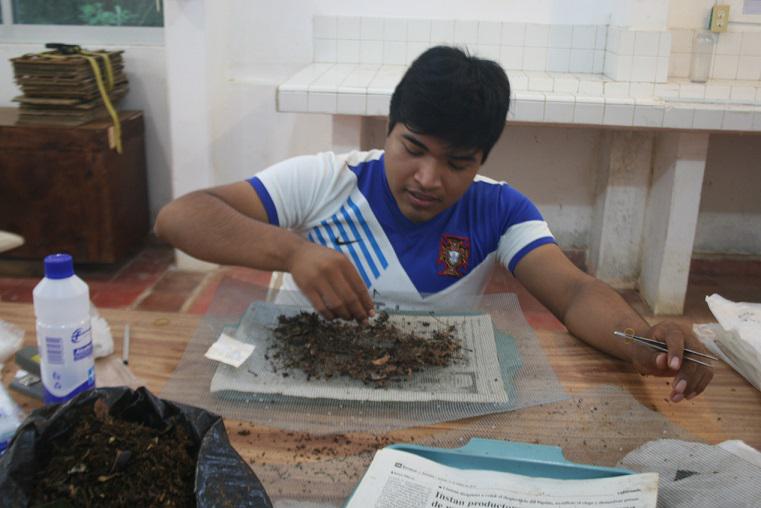Miriam San José y Alcalde
This project will identify the landscape spatial characteristics with highest impact on seed dispersal, seed predation and seedling/sapling recruitment in Mexican fragmented rainforests.

With the rapid human population growth and increasing demands for agricultural lands, tropical forests have been progressively converted into agricultural landscapes, and even the last tracts of old-growth forests have been transformed into archipelagos of forest fragments. Under this scenario, conservation efforts may be misguided unless we understand how land-use changes affect biodiversity and forest regeneration. Rainforest regeneration depends on ecological processes, such as seed dispersal, seed predation and seedling/sapling recruitment, which are increasingly threatened by deforestation, forest fragmentation and defaunation worldwide.
This project will be the first to assess the independent impacts that different landscapes attributes (forest cover, forest fragmentation, edge density, connectivity, and matrix type) may have on seed dispersal, seed predation and seedling/sapling recruitment. In particular, we will test for differences among plant functional groups (e.g. seed size, light tolerance, and dispersal syndrome) in their response to landscape changes. We will compare the response of such key ecological processes to landscape changes between two regions that have different landscape structure and land-use history: Los Tuxtlas (Veracruz) and the Lacandona rainforest (Chiapas). Both regions represent biodiversity hot-spots and are considered of main conservation concern by the Mexican government. Los Tuxtlas has been severely deforested, and nowadays <10% of forest cover remains. Forest fragments are principally surrounded by a matrix of cattle pastures, and most mid- and large-sized animals have disappeared, i.e., this region has suffered a defaunation process. In contrast, the Lacadona rainforest maintains approx. 40% of forest cover, has a highly heterogeneous matrix composed by annual and arboreal crops, pasturelands, and secondary forests, and it has not suffered a noticeable defaunation process. Thus, by comparing the response of these ecological processes to landscape changes between both regions, this project will shed some light on the possible causes and ecological consequences that land-use change may have on forest regeneration and biodiversity persistence.
We will also conduct workshops with local communities to bring the fascinating world of forest regeneration to local people, so that they become aware of it and can begin to appreciate and protect the remaining rainforests. Our results will be published in international journals and presented in national and international meetings to search for generalizations and to build general theories that can be put to use by conservation biologists.